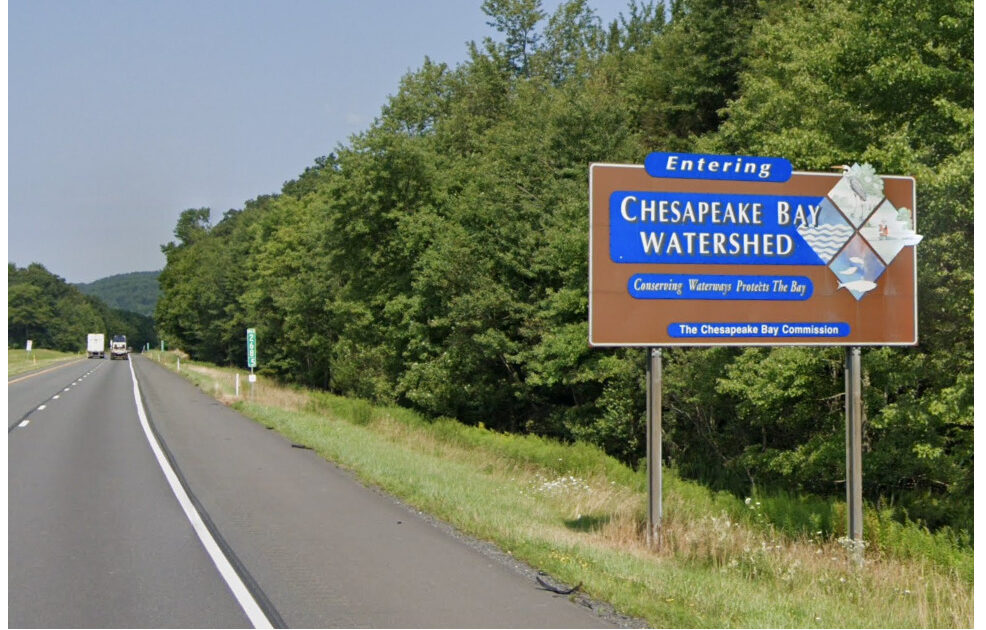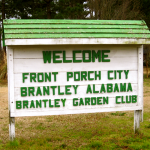Warren County, NJ. My father—not a native to New Jersey himself, but a long-ago transplant to the Garden State—liked to point out the audacity of the “Welcome to Pennsylvania” sign that used to greet travelers on the western side of the Delaware Water Gap. In the early 1990s, the Commonwealth’s infamous tourism slogan was “America Starts Here,” and many a driver (my father included) learned to scorn its bold typeface standing on the bank of the Delaware River. It was surely intended to emphasize the particular history of Philadelphia and the general role that Pennsylvania played during the establishment of our new nation and our founding documents—that much was plain. But the veiled insult of the slogan (which my father often took great pains to exposit) was the suggestion that the traveling reader ignore and/or despise the nearly 70 miles of “America” already in their eastern-facing rearview mirror. My father was convinced that our neighboring commonwealth, boasting no Atlantic shoreline of which to speak, was intentionally taking a dig at the unassuming, yet not unimportant, state to its immediate east.
After the Water Gap, Interstate 80 winds the westbound sojourner up through the Pocono Mountains of eastern Pennsylvania. It’s a fairly scenic stretch of highway, as interstates go. The exits stretch much farther apart, the billboards take a decidedly less corporate tone, and the trees shrink in stature and caliper with every topographic contour ascended. Then suddenly, on the downslope side of one of the birched ridges, stands another road sign. The sign is remarkable for a number of reasons—and none of them quite as errantly-offensive or audacious as the marketing campaign of Pennsylvania’s Department of Commerce. Strictly informational in nature, the sign states in large letters: “Entering Chesapeake Bay Watershed.”
The sign startles the speeding traveler because it refers to the waters of the Chesapeake Bay from—of all places—an outpost in the wooded crests of the Pocono Mountains. Between mile markers 268 and 269, in the right-of-way of Interstate 80, along the veritable equator of Pennsylvania, nearly 140 miles north of the very uppermost tip of the bay, this sign seems positively out of place.
But it does prompt the mind to wander as much as wonder—wander, for example, into the rarefied recesses of the mind that consider things like watersheds. Associations like naturalists and hand-drawn topographic maps come to mind. Tall, mustachioed men in waders and leather fedoras . . . bespectacled women with butterfly nets and short haircuts and degrees in Molecular Ecosystems. . . sequoias. . . lumberjacks. . . What is a watershed anyway? Would we know it if we saw one? What human has ever seen one in the wild?
A watershed, of course, is the entire area of land that is the natural source for a particular body of water. So the Chesapeake Bay is fed (in very small part) by the rain that falls on its surrounding hills and ridges and trickles down to its shore. But it’s also fed (in much, much more significant part) by the Susquehanna River, the James River, and the Potomac River (among others). By extension, therefore, the Bay is also fed by the water from the hills and ridges and mountains that channel surface water and shallow groundwater into those major rivers. And, by further extension (!!), those rivers are fed by a myriad host of smaller rivers, streams, creeks, and drainage swales which are fed by water from the hills and ridges and mountains that channel water into those smaller rivers. A watershed is a truly magnificent, expansive marvel to consider.
So the sign atop a Pocono Mountain in distant Luzerne County, Pennsylvania is heralding a great and profound wonder—a mystery even. It is both a caution and a command. What Falls Here Flows to the Bay. Your Actions Have Consequences. No Spill Is Neutral. etc., etc. Not unlike the “Drains to Waterways” reminder stamped on the curbs above urban stormwater inlet grates, the road sign marking the edge of the Chesapeake Bay watershed points us to the infinitely interrelated nature of each and every ecosystem. All streams flow into the sea, says the Preacher.
But the active mind on an early morning highway can wander off the bitumen into Metaphor and then draft aimlessly behind Greater Meaning for a dozen miles at a time. Doesn’t the marvel of a watershed remind us of something greater and higher? What does its interrelated complexity point to in our own lives? What are the watercourses and watersheds of our hearts?
We’ve all met people with expansive, healthy watersheds. Or, more likely than not, we have one or two of them in our daily lives. Men or women who are truly grateful—all the time, about everything. Those brothers and sisters who seem to relish and delight in every single moment of every single day. Bathing in every ray of sunshine, splashing in every mud puddle. They rejoice always—in both plenty and in want—they give thanks in all circumstances, they pray without ceasing. They are humble. They are content. They are veritable reservoirs of thankfulness—full to the brim and overflowing with gratitude.
One could assume that such gratitude is come by naturally. Perhaps some people are just more inclined to thankfulness, we might (wrongly) conclude—similar to the way we excuse anger or tardiness or excess with stereotypes or euphemisms or a hashtag. No, I don’t think any of us, after even just a moment of honest consideration, believes that such a cursory explanation holds water, so to speak.
Like its evil counterparts, gratitude is an attribute for which we ourselves are responsible. It is an attitude that can be nurtured and developed. We can decide to be thankful, and, what’s more, our capacity for gratitude can be enlarged and compounded like an investment. Like bitterness, it can grow and take root in our hearts. Like anger, it is a habit than can become a reflexive reaction to everyday and trivial circumstances. Gratitude is itself the fruit of a disciplined and well-trained mind—and it is also a path along which we are led further up and further in to richer and more abundant fruit.
If then the heart of the truly grateful seems to be like a brim-full reservoir perpetually spilling over its weir, we would do well to consider the upstream source of such an outflow. If the heart speaks out of the abundance of its outflowing reservoir, then what is feeding the reservoir on the upstream end? What rivers are pouring into that thankful heart? And what streams are feeding those rivers? What otherwise unspectacular ditches, dales, and swales are feeding those streams? How large, how active is the watershed of the grateful heart?
To foster a full heart of gratitude—a deep reservoir of thanks—we must have the regularity of the rivers. Unceasing in their flow, perpetual in their serpentine paths. Always emptying into the sea. We must continually be dredging out places where our hearts’ channels are growing too accustomed to grace and the flow is shallow and thin. These main arterial courses must be strong and deep and a daily presence in our lives. Rejoice always, says the apostle.
Even the mightiest river is dependent on its own upland sources. These secondary and tertiary streams that feed a river are, of course, shallow and slender by comparison. But what tributaries lack in singular volume they remunerate in their agility and resourcefulness and prevalence. Streams are everywhere and gather runoff from everything—mountainsides, hillsides, parking lots, valleys. Streams are opportunistic and impertinent and indiscriminate. They chatter along the rambling roadside and then roar in the steep gorges. They stop us with a laugh and a splash and playfully call us to chase them down the way. Tributary streams remind us that every attitude flows to the sea. Our reactions to the streams of today’s circumstances feed the rivers of our everyday attitudes. The watershed of our heart is what feeds the abundance out of which our mouth speaks. It is what will spill out when we are squeezed or shaken. As Wendell Berry’s Hannah Coulter reminds us—drawing from a rich source herself—“‘Rejoice evermore. Pray without ceasing. In everything give thanks.’ I am not all the way capable of so much, but those are the right instructions.”
Gratitude, as it were, Starts Here.



